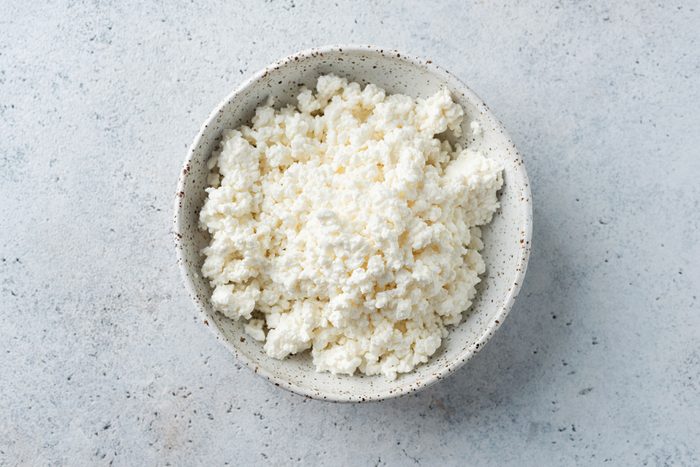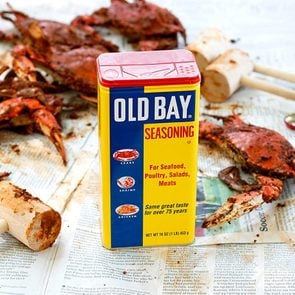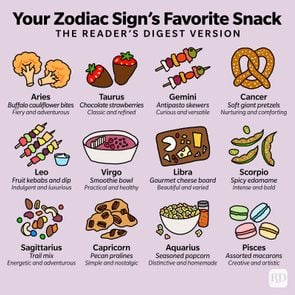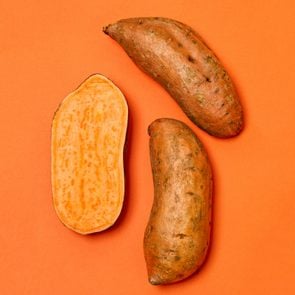If You’re Not Eating Cottage Cheese Every Day, This Will Convince You to Start
Updated: Jan. 31, 2024

An old favorite is making a comeback! Here's what cottage cheese is—and why this high-protein pick should be on your plate.
We’ll admit that cottage cheese is not the most attractive food, based on appearance alone. Yet look beyond its wet, lumpy exterior to all the health benefits and the ways you can eat and cook with it, and its status as a superfood quickly emerges. But exactly what is cottage cheese?
We have the answer, plus all the food facts you need to know about this resurgent health food, including how it’s made; how it differs from burrata, cheese curds and American cheese; the tastiest ways to eat it; and the easiest ways to store it.
Get Reader’s Digest’s Read Up newsletter for more food, humor, cleaning, travel, tech and fun facts all week long.
What is cottage cheese?
“Cottage cheese is a type of cheese that is known for its lumpy or curd-like texture,” explains Jordan Hill, RD, a registered dietitian with Top Nutrition Coaching. You’ll find it in the dairy aisle next to the ricotta cheese (which is made from whey, while cottage cheese is made from curds) and the sour cream (which is made by fermenting regular cream), near the American and Swiss cheeses. Speaking of, learn why Swiss cheese has holes in it.
How is cottage cheese made?
What is cottage cheese made of? In its simplest form, just milk and an acid. “Cottage cheese is made by coagulating milk with an acidic substance, such as lemon juice or vinegar, and then separating the curds from the whey,” says Hill. “The curds are the solid portions of the milk that clump together, while the whey is the liquid portion that is drained off.”
Cottage cheese producers use machines to complete this process and make huge amounts of cottage cheese at once, but you can actually make your own at home if you prefer. It takes a bit of time, but it’s mostly hands-off.
To make it, you’ll heat whole milk to 190 degrees, stir in vinegar or lemon juice, then let it sit for 30 minutes before transferring the mixture to a colander to drain for another 30 minutes. By that point, you’ll have one huge cottage cheese curd that you can break up and use as you like—say, spooning over some fresh melon.
What does cottage cheese taste like?
On its own, cottage cheese has a very mild taste, which is why most people mix it with other ingredients or use it in recipes as opposed to eating it by itself. Like cream cheese, it is light and tangy, which allows it to take on other flavors or blend into recipes well.
Is cottage cheese good for you?
The popularity of cottage cheese as a healthy food peaked in the early 1970s, and since then, it has steadily declined while the popularity of yogurt has skyrocketed (largely due to the massive marketing push yogurt has received). But cottage cheese is making a comeback, primarily on TikTok, and for good reason: It’s still as healthy as it was 50 years ago.
“Cottage cheese is not a new food, but it has been rediscovered by people as a higher-protein, lower-fat, lower-cost food,” says Hill. “And for those reasons, it’s catching wind again.”
The cheese has its manufacturing process to thank for its coveted high-protein content. “During the coagulation process, the proteins in milk, primarily casein, form the curds,” Hill explains. “These curds are retained in cottage cheese, providing a higher concentration of protein compared to other cheeses, where the curds are often removed.”
Indeed, 1 cup of cottage cheese contains a whopping 25 grams of protein, roughly the same amount as a 3-ounce grilled chicken breast. Plus, you have the option of purchasing fat-free, 1%, 2% or whole-fat versions. “Because of the higher protein and varying fat options of cottage cheese, it can be a satiating and versatile food at a lower calorie ‘cost,'” explains Hill. “Cottage cheese also has little to no saturated fat or added sugar, nutrients that if eaten in excess can increase the risk for certain chronic diseases.”
So what is cottage cheese? It’s a versatile, adaptable, inexpensive, high-protein food.
How to eat cottage cheese
Just like many frozen foods, cottage cheese works well both by itself and incorporated into recipes. You can eat it in many of the same ways that you would eat yogurt, such as in a parfait.
If you want to get the protein boost from cottage cheese but you’re not a fan of the texture, simply pulse it in a blender or food processor to smooth out the curds before spooning it into a bowl. “Layer cottage cheese with fresh fruits like berries, sliced peaches or pineapple chunks,” Hill suggests. “Top with a drizzle of honey and a sprinkle of granola or chopped nuts for added crunch.”
Cottage cheese can also be incorporated into many recipes or used as a substitute for ricotta or cream cheese if you’re looking to up the protein content of your dish. Some of Hill’s favorite cottage cheese recipes include:
- Cottage cheese pancakes: “Replace some or all of the flour in your pancake recipe with cottage cheese,” she says. “This adds protein and a creamy texture. Blend the cottage cheese into the batter for a smoother consistency.”
- Cottage cheese muffins: “Incorporate cottage cheese into muffin batter for added moisture and protein. Try adding it to recipes like blueberry muffins or bran muffins,” Hill suggests.
- Cottage cheese lasagna: “Use cottage cheese instead of ricotta in your lasagna layers,” she says. “Layer it with tomato sauce, lasagna noodles and your choice of vegetables and cheeses.”
How to store cottage cheese
You know how long milk lasts, but what is cottage cheese’s expiration like? Similar to other dairy products, cottage cheese will last about 7 to 10 days in the fridge. Ideally, you’ll keep it on one of the middle shelves, so mind proper fridge organization.
If you want to store it longer, some folks claim that flipping the container upside down forms a vacuum seal that reduces the possibility of bacteria growth. Just keep in mind that one of the answers to “What is cottage cheese?” is fresh cheese. In other words, it isn’t going to last as long as a block of cheddar cheese.
That said, you can freeze cottage cheese, provided you store it in an airtight container or resealable bag, and it will keep for up to three months. But it will lose its texture in the freezer, so we recommend using frozen and thawed cottage cheese only for cooking, not eating on its own.
About the expert
- Jordan Hill, RD, is a certified registered dietitian with Top Nutrition Coaching. She has a master’s degree in clinical dietetics, is a certified sports dietetics specialist and specializes in working with pregnant and postpartum people, athletes and clients with chronic diseases and GI disorders.
Sources:
- NPR: “The Fall of a Dairy Darling: How Cottage Cheese Got Eclipsed by Yogurt”
- USDA FoodData Central: “Cheese, cottage, creamed, large or small curd”



